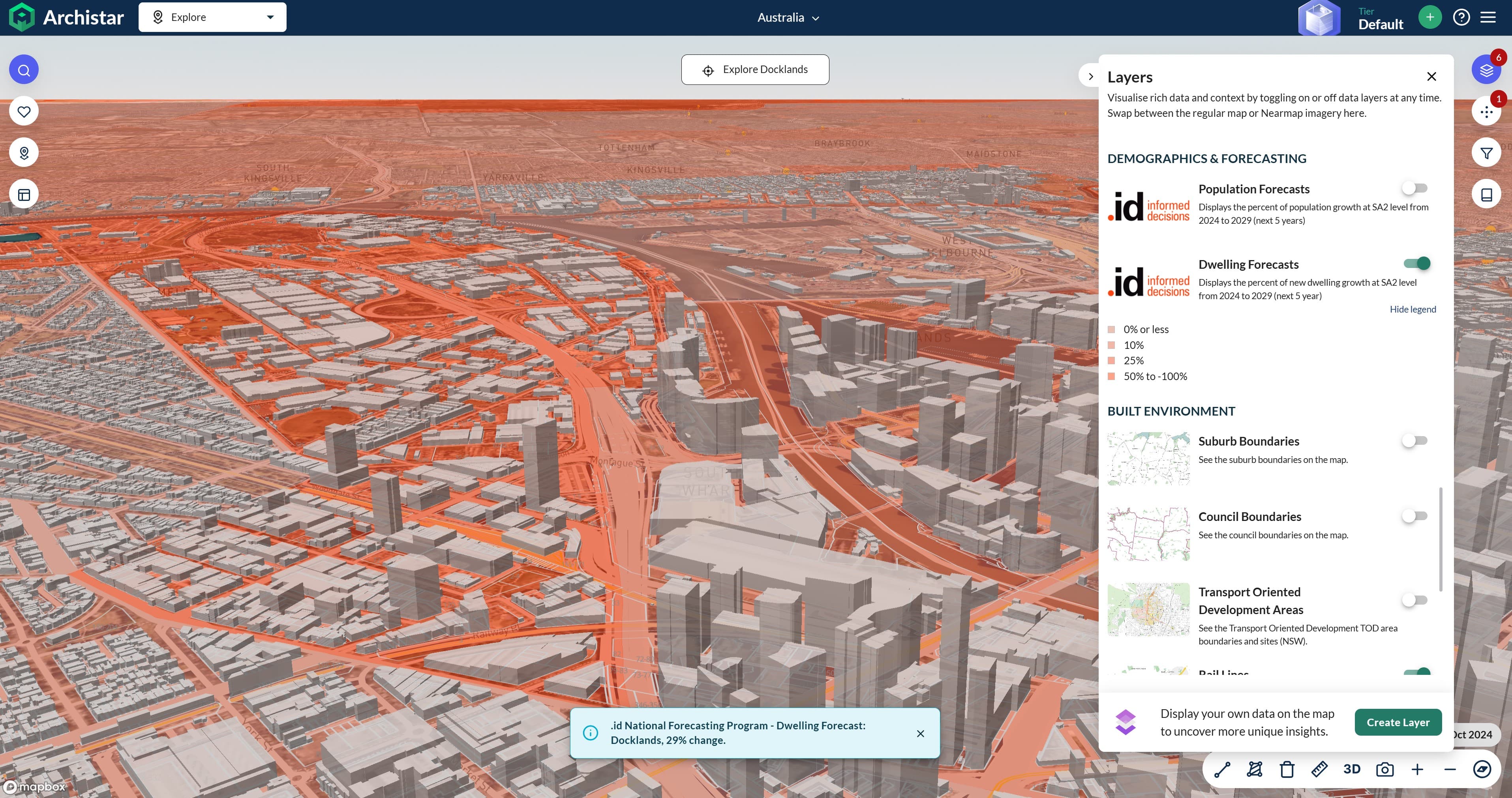BLOG
Future population growth in Canberra’s diverse region
Future population growth in Canberra’s diverse region
Planning for future population growth and change in southern New South Wales just got a little easier with the publication of population and dwelling forecasts (forecast.id) for each of the eight member councils of the Canberra Region Joint Organisation (CBRJO). The Canberra region not only covers a wide geographic area, but it is incredibly diverse in terms of the drivers of population change.
Canberra Region Joint Organisation member councils
The LGAs in the region include the coastal councils of Eurobodalla and Bega Valley, the rural councils of Goulburn-Mulwaree, Upper Lachlan, Hilltops and Snowy-Monaro, and the Canberra peri-urban councils of Queanbeyan-Palerang and Yass Valley. A map of the CBRJO and the member councils is shown below.

Future outlook for the Canberra region
The CBRJO region is forecast to grow from a population of 208,570 in 2011 to 264,074 in 2036 – a 27% increase over 25 years – but the headline population figures mask considerable variation at the LGA level. The table below breaks down population change for each council in five-year intervals over the forecast period.
| Population forecast by council | |||||||||||
|---|---|---|---|---|---|---|---|---|---|---|---|
| LGA Name | 2011 | 2016 | 2021 | 2026 | 2031 | 2036 | Average annual % change | ||||
| Bega Valley | 33,120 | 33,750 | 34,642 | 36,045 | 37,421 | 38,840 | 0.6% | ||||
| Eurobodalla | 37,079 | 37,769 | 39,205 | 40,931 | 42,808 | 44,774 | 0.8% | ||||
| Goulburn – Mulwaree | 28,363 | 29,918 | 31,830 | 33,475 | 35,131 | 36,759 | 1.0% | ||||
| Hilltops | 18,793 | 18,896 | 19,114 | 19,461 | 19,859 | 20,297 | 0.3% | ||||
| Queanbeyan – Palerang | 54,853 | 57,258 | 60,705 | 65,358 | 70,810 | 77,221 | 1.4% | ||||
| Snowy -Monaro | 20,385 | 20,614 | 20,743 | 21,038 | 21,248 | 21,591 | 0.2% | ||||
| Upper Lachlan | 7,423 | 7,594 | 7,702 | 7,742 | 7,721 | 7,716 | 0.2% | ||||
| Yass Valley | 15,603 | 16,964 | 18,436 | 20,268 | 22,166 | 27,726 | 2.3% | ||||
| Canberra Joint Region Organisation | 208,570 | 215,044 | 223,955 | 235,063 | 247,155 | 264,074 | 0.9% | ||||
Source: forecast.id
There is a strong relationship between proximity to Canberra and population growth. Almost two-thirds of population growth in the CBRJO is forecast to occur in Yass Valley and Queanbeyan-Palerang. These councils are well and truly within Canberra’s economic and social catchment and this influences demand for new housing. Queanbeyan-Palerang is the largest council in the CBRJO and is forecast to grow by 41% out to 2036, to reach a population of more than 77,200. There are two major development fronts that account for much of this growth.
Googong is a major development front located to the south-east of Queanbeyan and is expected to grow from a scattered rural population of around 1,100 to over 13,000 in 2036. Most new residents here will be young families, similar to the 1990s-2000s growth suburb of Jerrabomberra. From the 2020s, urban development is assumed in South Tralee which will attract a similar demographic. Presently much of Yass Valley’s growth is concentrated in and around the towns of Yass and Murrumbateman, as they offer rural residential, large lot and town based living within commuting distance of Canberra via the Barton Highway. From the 2020s, urban development is assumed in South Tralee which will attract a similar demographic. Growth rates are forecast to increase considerably after 2030, when the NSW part of the West Belconnen development front is expected to start its major release phase. This is a cross-border growth area that is accessed via the ACT side but is landlocked in Yass Valley. It is essentially an extension of the Canberra urban area into NSW and so presents an interesting geographic quirk. The ACT component will undergo development over the next 15-20 years before it crosses over into Yass Valley.
Rural population growth
At the other end of the scale, the smaller rural councils are forecast to record very modest growth out to 2036. Upper Lachlan Shire is forecast to record growth of just under 4% over the 25 years, from 7,423 in 2011 to 7,716 in 2036, the lowest of all eight councils. Upper Lachlan Shire is a rural council with one town at Crookwell and overall there is limited demand for new housing. Like many rural councils in regional Australia, its population growth prospects are impacted by the out-migration of young adults to urban areas of Australia. Snowy Monaro Regional Council, despite its healthy and diversifying tourism economy, also loses young adults to other parts of Australia. It is forecast to grow by 6% over the forecast period, but interestingly, because of the tourism role and function, it does attract new residential construction. However, many are holiday houses or second homes servicing tourist and part-time populations, particularly in the Thredbo and Jindabyne regions, and parts of the Canberra Corridor.
The coastal councils of Eurobodalla and Bega Valley are assumed to record modest growth out to 2036. In recent years population growth along the NSW coast has slowed considerably and there is also a strong holiday home/second home market which impacts on household growth, and therefore that of the permanent population. Little change is forecast in dwelling vacancy rates in these areas as they are assumed to retain their tourism/holiday function. New residents are attracted to the high amenity of these areas, and they have a dual housing market consisting of families and retirees.
Goulburn-Mulwaree is a rural council with a historic regional centre (Goulburn) and modest growth is forecast out to 2036. Most of the growth is occurring in the northern part of Goulburn where there is a large supply of residential land. Growth in rural areas is influenced by Canberra in the south but this is an area popular for weekenders hence dwelling vacancy rates are very high, and this impacts growth of the permanent population in a similar way to coastal areas. The northern area has some growth forecast, particularly around Marulan and rural residential lots around Goulburn itself.
Comparing change
The size of the CBRJO and the variation in economic function and demand for new housing really shows how different locations change in different ways over time. In such a region, it is impossible to ignore the influence of Canberra and its increasing economic and social reach. This is particularly true of councils located adjacent to the ACT, whereas councils further away have different drivers of population change.
Using the new Canberra region population forecasts, users can compare the forecast outcomes for each council against the CBRJO region benchmark, as well as against other member councils. As well as comparing councils within the region, more detail can be obtained from the individual forecast.id sites for each member council. You can explore the new Canberra region forecast.id site here.
If your council or regional body could benefit from a regional collaboration, contact us to see how we can help.
.id is a team of population experts who combine online tools and consulting services to help local governments and organisations decide where and when to locate their facilities and services, to meet the needs of changing populations. Access our local government area population forecasts here.
Simone - Myth Buster
Simone has a rich background in human geography, demography and urban planning – a background that was useful in her previous roles in the Commonwealth and State Governments, and now as part of the forecast team at .id. From the Queensland coast to the southern suburbs of Perth, Simone produces population and dwelling forecasts that help local governments make informed decisions about future service and planning needs. She is a regular contributor to .id’s blog and has spoken at several conferences on how our cities and regions are changing. She is a big advocate of evidence-based planning and how Census and other data can inform this. Outside of work Simone is a keen traveller and photographer – interests that tie in well with her professional life and help her to understand “place”.


.png)






